Uncover The Heart Of Ancient Rome At The Roman Forum In 2026
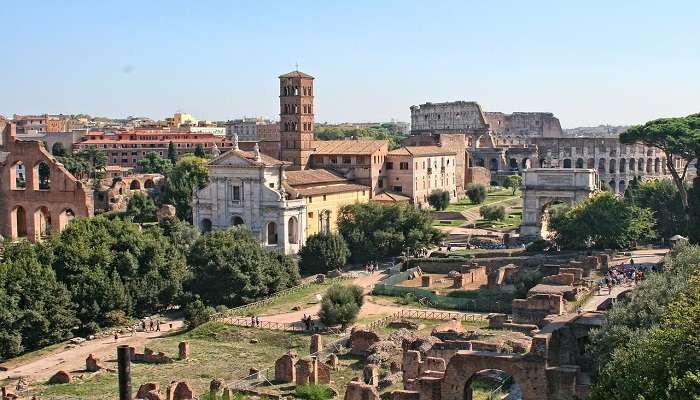
When exploring the ancient city of Rome, one of the top things to do in the Roman Forum is to immerse yourself in its rich history and stunning architecture. As you walk through this historic site, you’ll discover remnants of temples, basilicas, and government buildings that once formed the heart of ancient Rome. From the majestic Arch of Titus to the fascinating Temple of Saturn, the Roman Forum offers a captivating glimpse into the past, making it a must-visit for history lovers and travellers alike.
Imperative Things To Do In The Roman Forum
Explore the best things to do in the Roman Forum while planning your trip to Rome:
1. The Temple Of Saturn
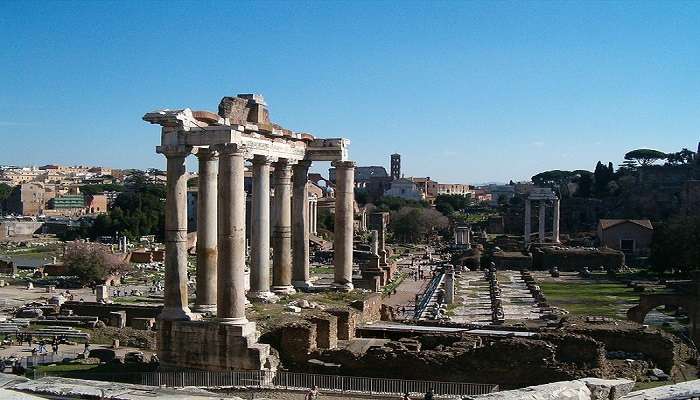
Massive columns still hold up the once-grand structure of the Temple of Saturn. These are remnants of a grand structure with a lofty podium, porch, and frontal steps to the temple entrance. The temple was a mix of Roman- and Greek-styled buildings, as seen in its Ionic columns and friezes. Back in its glory days, the Temple of Saturn served not just as a religious centre but also as an economic one.
The temple also contained the Roman treasury, called Aerarium, which was used to store state funds as well as golden bullae of other sorts: public records or weapons; ancillary shrines for minor gods, such as those set up by victorious generals only in times when they had been granted a triumph.
Entry Fee: NA
Address: 00186 Rome, Metropolitan City of Rome Capital, Italy
Timings: Open 24 hours
Also Read: Facts About Roman Forum
2. The Rostra
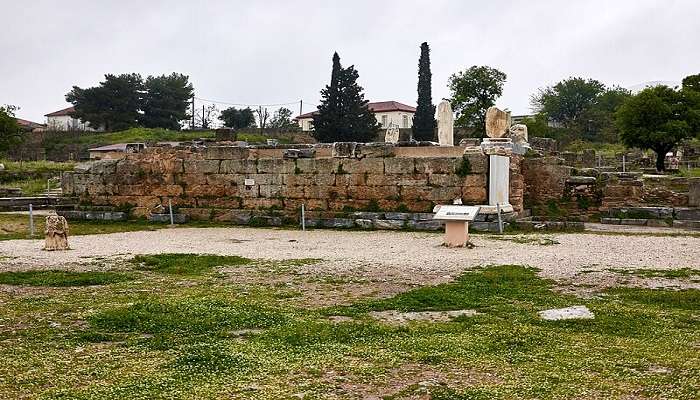
For its part, the rostra symbolises Rome’s political and military power throughout history. Built in the fourth century BC, it was one of Rome’s most significant ancient platforms—a place where speakers made grand speeches to crowds assembling at the heart of public life. The name “Rostra” is Latin for ship’s beaks (“rostrum”), which were originally trophies from naval victories that decorated this platform, showcasing Rome as a sea-faring power.
Among the most famous moments on this platform was Mark Antony’s speech after the assassination of Julius Caesar in 44 BC. Antony stood on that platform and gave his most excellent speech: “Friends, Romans, lend me your ears.” This speech, which Shakespeare has immortalised, was a significant turning point in the history of Rome.
Entry Fee: NA
Address: Parco Archaeological del Colosseo, Via Sacra, 00186 Roma RM, Italy
Timings: Mon-Sun: 9:00 AM – 4:30 PM
3. The Curia Julia
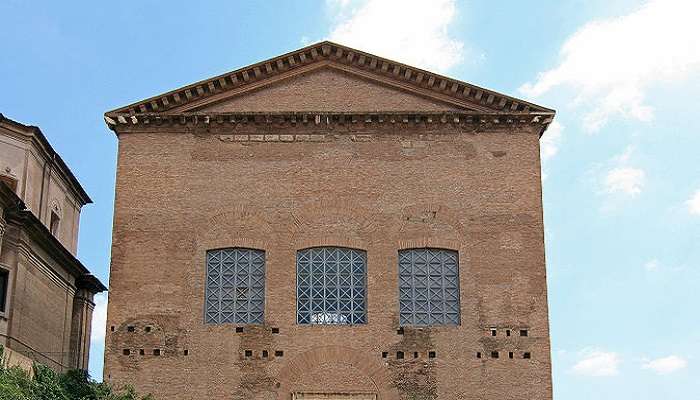
The Curia Julia, the Senate House of ancient Rome Home to it was where some of the most meaningful decisions in Roman history were made. It began sometime after 44 BC by Julius Caesar and was completed in 29 BC by Augustus; it became the meeting place of the Roman Senate. The unprepossessing yet formidable structure is a fitting symbol of the political nucleus of Rome—then masterminding one world from Seven Hills—as any in history.
Visitors can get their hands on marble flooring and trace elements of original seating configurations depicting life under Roman governance throughout the interiors. Today, the Curia Julia stands as a preserved monument within the Roman Forum, drawing visitors from around the world interested in exploring ancient Rome’s rich history.
Entry Fee: 17.95 Euro
Address: Parco Archaeological del Colosseo, Largo della Salara Vecchia, 00186 Roma RM, Italy
Timings: Mon-Sun: 9:30 AM – 6:15 PM
Related Read: Roman Food
4. The Basilica Of Maxentius And Constantine

The Basilica of Maxentius and Constantine, known as the Basilica Nova, is one of the few buildings in the Roman Forum that has stood still. You will see the basilica, which was initially constructed by Emperor Maxentius in AD 308 and later finished off by Constantine; it was the largest building on the Forum used as a place of public gathering, much evidence having been found here for its use also as law-court.
Visitors to the basilica can explore some of the arches of its giant skeleton and see for themselves just how marvellous this massive church once was, complete with water fountains in its vast interior space. Today, the remains of the Basilica of Maxentius, including its towering arches, serve as a testament to the grandeur and ambition of Roman engineering.
Entry Fee: 17.49 Euro
Address: Clivo di Venera Felice, 00186 Roma RM, Italy
Timings: Mon-Sun: 8:30 AM – 6:15 PM
5. The Temple Of Castor And Pollux

The temple was built in honour of the Geminis, who were worshipped as protectors of Rome’s cavalry, and it was built around 495/6 BC when their cult was said to have been first inaugurated. Reputedly, the twins themselves even appeared on or beside the battlefield, rallying Roman troops; some gave Romulus a helmet and one of them a shield; for good measure, they saw off victory against their Latin League adversaries.
The original temple had a magnificent peripheral design, with facades surrounded by columns, and the cella (or inner chamber) contained statues of Dioscuri. The temple served as both a religious hub and a demonstration of Rome’s military might, so its destruction led the populace to come up with explanations.
Entry Fee: 17 Euro
Address: 00186 Rome, Metropolitan City of Rome Capital, Italy
Timings: Mon-Sun: 9:00 AM – 4:30 PM
Related Read: Best Hotels In Rome
6. The House Of The Vestal Virgins
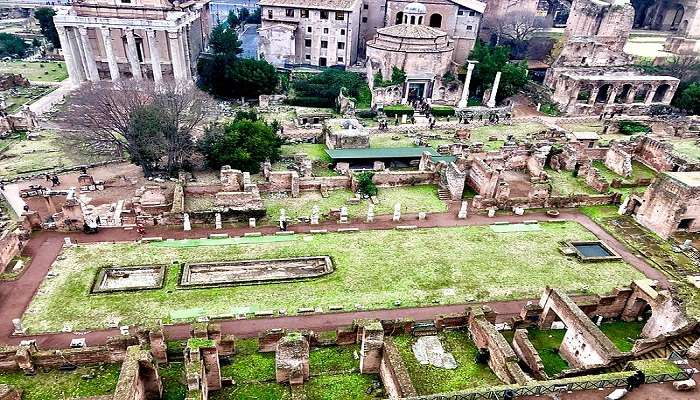
The House of the Vestal Virgins, or Atrium Vestae, consisted of several compartments and a religious and residential complex inside the Roman Forum. Initially, it was the residential area of the Vestal Virgins, a group of priestesses tied to Vesta. This location formed an essential part of Roman civic and religious life. These priestesses were responsible for maintaining the sacred flame of Vesta, which was said to safeguard security and prosperity in Rome.
Besides offering palatial surroundings, with lush green private gardens and exquisite fountains and statues that confirm the high regard in which these priestesses were held, the houses resembled functional spaces. The gardens were a calm oasis away from the activity of The Forum, and the fountains not only brought beauty but also provided a sense of calm.
Entry Fee: 17.95 Euro
Address: Largo, Via della Salara Vecchia, 00186 Roma RM, Italy
Timings: Mon-Sun: 9:00 AM – 7:15 PM
You May Also Like To Read: Famous Foods Of Italy
Discover the Roman Forum’s rich history and stunning ruins as you stroll through the centre of ancient Rome. Each site reveals a piece of the city’s storied past, from the majestic Arch of Titus to the serene House of the Vestal Virgins. Plan your trip to Italy and immerse yourself in Rome’s timeless heritage.
For our editorial codes of conduct and copyright disclaimer, please click here.
Cover Image Credit: DomyD for pixabay
Frequently Asked Questions About Rome Forum
What was the Roman Forum?
The Roman Forum was the hub of ancient Rome's public life, where people bought and sold produce, participated in religious displays, and engaged in politics. It was also at the heart of Rome's civic and political life; on this flat open space, dignitaries were inaugurated, public triumphs celebrated, and essential speeches were delivered.
What does the Roman Forum have that makes it worthwhile to visit?
Major Roman Forum sights include the Colosseum, the Temple of Saturn, the Arch of Titus, the Temple of Castor and Pollux, the House of the Vestal Virgins, the Rostra, and the Temple of Vesta. Each place has intrinsic value in teaching us about Roman society and culture.
How can I see the Roman Forum in the best way?
Take an interactive guided tour of the Forum. Many private companies offer guided tours right on the spot and with booking before entrance fees. You can also follow any one of a large number of ready-made audio routes with your audio guide.
Can I purchase Tickets In Advance?
Yes, we recommend buying tickets online in advance to avoid long lines and ensure the desired time slot. It's conducive, especially during peak travel periods.
Are there any facilities at the Roman Forum?
There is a toilet room at the Roman Forum, and there are many cafés and shops next door, too. You should take sunscreen, a hat, and some water; there’s not much natural shade around here.
People Also Read:
Tourist Places In Rome Summer In Rome Things To Do In Rome

Unveil the hidden treasures of the globe and turn every travel dream into reality. As a Content Writer, I am passionate enough to craft stories from ancient wonders to modern marvels. My words paint the picture-perfect itinerary for unforgettable experiences. Let my words be your trusted guide to immerse in the diverse culture and discover the beauty of the unknown.











